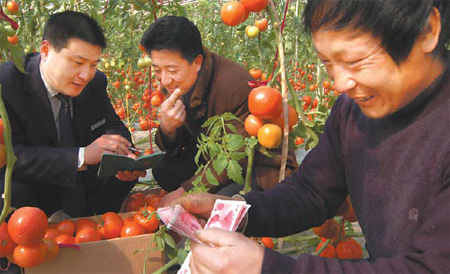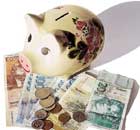Economy
Economists urge caution over production capacity
By Xin Zhiming (China Daily)
Updated: 2010-01-22 07:37
 |
Large Medium Small |

Many analysts are now more concerned about the economy overheating than they were about it contracting a year ago when the global financial crisis hit China.
The country's year-on-year gross domestic product (GDP) growth reached 9.1 percent and 10.7 percent in the third and fourth quarters of 2009 respectively, and it is expected to rise further in the first quarter of this year.
The rapid growth constitutes cause for concern as the country has pumped massive amounts of investment into the financial system, say economists.
The mass injection of liquidity - new yuan-denominated lending last year almost doubled that in 2008 - jazzed up China's economy and helped industrial output resume strong growth momentum, leading to another problem: Overcapacity.
"China's production capacity is expanding continually but where is the market to satisfy this increased capacity?" said Wang Yiming, deputy director of institute of macroeconomics at the National Development and Reform Commission (NDRC).
|
 A village bank worker, left, explains the terms of a microfinance loan with farmers in Xihu, a village near Rizhao in Shandong province. Microfinance has helped many small businesses to flourish. [Chen Weifeng/China Daily] |
China needs to go through a "second transition", Wang told a seminar hosted by the Asian Development Bank and NDRC in Beijing on Tuesday.
The second transition refers to the country's upcoming economic restructuring, which is expected to make the economy more consumption driven, services oriented and environmentally friendly. The first transition, which began in the late 1970s, was focused more on growth.
As the government put the final touches to the 12th Five-Year Plan (2011-15), leaders have realized the dilemma they face and are aiming for a more balanced development mode.
"Massive fiscal and monetary stimuli have successfully substituted for the lost growth in the short term, but Chinese leaders have made it clear there is a limit to public investment and monetary expansion," said C. Lawrence Greenwood Jr., vice-president of Asian Development Bank, during the seminar. "Chinese bank regulators and central bank officials have also been taking steps to guard against the emergence of credit bubbles and inflation."
The People's Bank of China, the central bank, encouraged commercial banks to extend more loans last year to support agriculture, small and medium-sized enterprises (SMEs), and businesses in less-developed middle and western regions of China - all segments of the economy that could be important growth engines but create less bubbles.
Bank loans in rural areas increased 33 percent last year, 15 percentage points higher than in 2008, said Zhang Tao, director general of statistics and analysis department at the central bank.
Loans for SMEs rose 30 percent, 16.6 percentage points higher than the previous year, while bank lending in western regions expanded by almost 38 percent, compared with 30 percent in the east, Zhang said on Wednesday.
But balanced development goes beyond fine-tuning financial policies, say analysts.
Economic growth was driven mostly by investment last year and, although consumption plays a large role, it is still not predominant. The proportion of consumption to GDP is less than 40 percent in China while it is often more than 70 percent in the developed countries.
"China's consumption is not carrying its weight," said Dwight Perkins, Harold H. Burbank professor of political economy at Harvard University.
The central government has initiated a slew of policies, such as the "cash for clunkers" program, to encourage consumption since the global crisis in the second half of 2008. While it helped the country weather the crisis, analysts said the overall savings rate could drop continually in the coming years, which would benefit consumption.
As Chinese society is ageing rapidly, household expenditure among the elderly will increase, while overcapacity could drive down corporate profits, making enterprises save less, said Wang.
The government, meanwhile, would have to spend a lot more to provide the improved public services it has promised, such as a more inclusive social security network, he said.

Achieving a "green economy" is another must for China if the nation wants to pursue sustainable development, say analysts.
"This model is particularly relevant for China, where progress in improving energy intensity and pollution control in the 1990s was reversed during its rapid transformation to heavy industry after 1997," said Greenwood.
China has made much headway "and is an early leader in pursuing green economic development", but is far from enough, he said.
The country set the stage for rapid development in renewable energy technology when it made the depletion of natural resources a key challenge in the 11th Five-Year Plan period (2006-10), he said, while adding that 40 percent of the State Council's 4-trillion-yuan ($586 billion) stimulus package was also primed towards green projects.
But to transform China into a green economy by 2030, Greenwood said the government might need to invest 1.5 to 2 trillion yuan each year, about 2 percent of average GDP.







